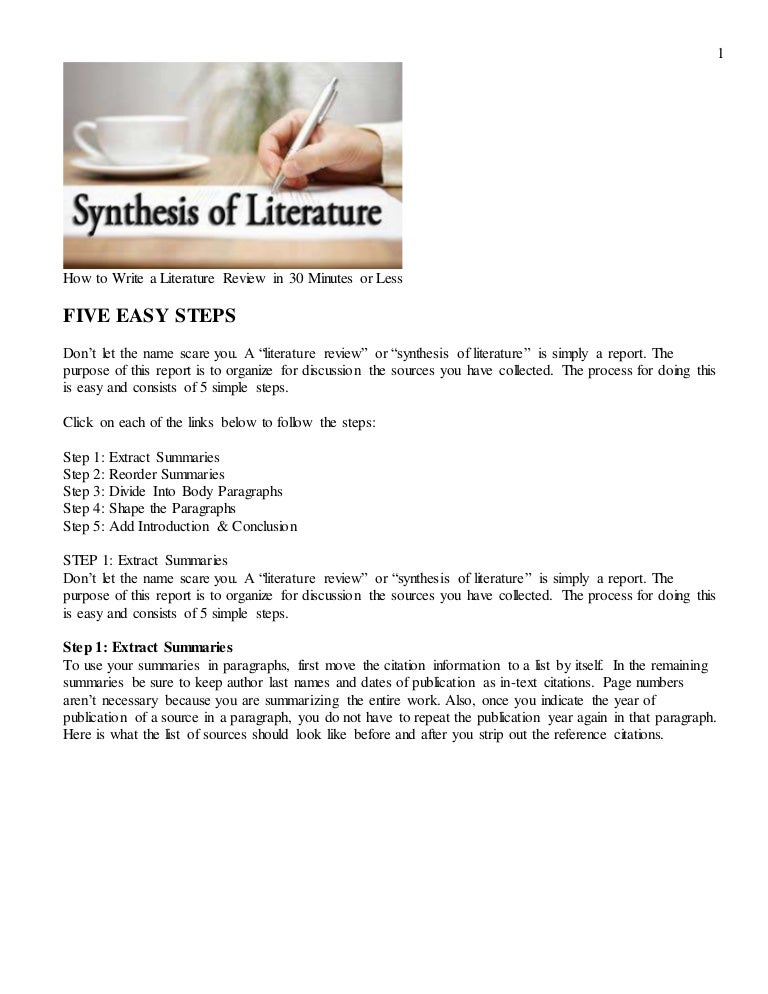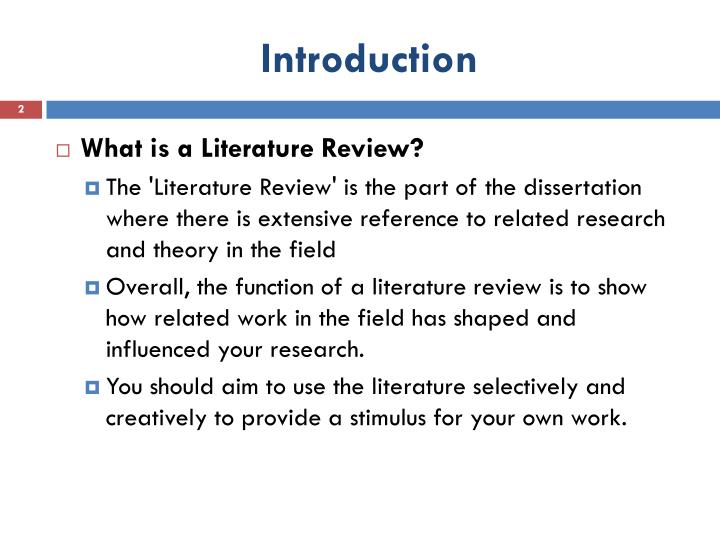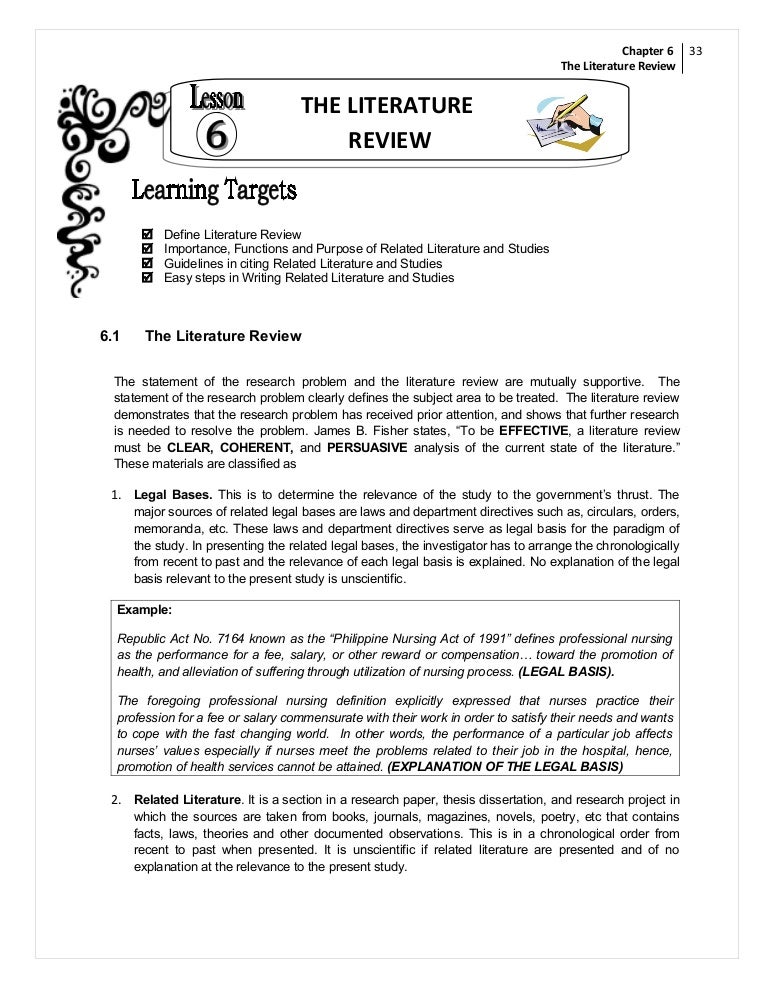A literature review is an overview of the previously published works on a specific topic. The term can refer to a full scholarly paper or a section of a scholarly work such as a book, or an article. Either way, a literature review is supposed to provide the researcher/author and the audiences with a general image of the existing knowledge on the topic under question. A good literature review can ensure that a proper research question has been asked and a proper theoretical framework and/or research methodology have been chosen. To be precise, a literature review serves to situate the current study within the body of the relevant literature and to provide context for the reader.
In such case, the review usually precedes the methodology and results sections of the work. Written in essay style, a literature review describes, classifies, and evaluates the sources of information published on a given topic. It's a review of a collection of research published by accredited scholars and researchers that is relevant to a research question. "Non-scholarly" sources, i.e., those you don't want to reference, include but are not limited to magazines, newspapers, web sites, and non-published material. The Lit Review does not have to be exhaustive; the objective is not to list as many relevant books, articles, and reports as possible. The idea of the Lit Review is not to provide a summary of all the published work that relates to your research, but a survey of the most relevant and significant work.
Narrative or Traditional literature reviews critique and summarise a body of literature about the thesis topic. The literature is researched from the relevant databases and is generally very selective in the material used. The criteria for literature selection for a narrative review is not always made open to the reader. These reviews are very useful in gathering and synthesising the literature located. Where a narrative approach differs from a systematic approach is in the notation of search methods criteria for selection,this can leave narrative reviews open to suggestions of bias. Literature reviews are designed to provide an overview of sources you have explored while researching a particular topic and to demonstrate to your readers how your research fits within a larger field of study.
Literature refers to a collection of published information/materials on a particular area of research or topic, such as books and journal articles of academic value. However, your literature review does not need to be inclusive of every article and book that has been written on your topic because that will be too broad. Rather, it should include the key sources highlighting the main debates, trends and gaps in your specific research area.
Use critical feedback as your guide.Most times, a literature review is sent out as a publication, or part of a larger manuscript. This means that your work will be reviewed for clarity, reliability, and validity as well as the impact or connection to the field. Do you know what others in the field know about this research? Will readers find this literature review relevant, appropriate, and useful? Before sending your manuscript or materials out for review in a publication, you may consider posting your work online at your blog, or sharing a Google Doc with peers to review. You should also use the feedback from the peer review process to guide revisions to this review.
You should also use this feedback as a way to guide your future literature reviews as well. Finally, if appropriate, find an open place online to share your research and findings to assist other individuals as they follow in your footsteps. As you compile your notes and write your review, you'll want to revisit your topic and audience to make sure you're focused on your goal. A literature review that tries to cover too many areas quickly loses purpose and utility. You should also consider whether the number of sources is appropriate to length of paper.
Remember that most literature reviews are written to provide argument or insight for a purpose. Be sure you don't include superfluous materials that detract from your argument and purpose. You should also remember that you'll want to remain broad as you'll attract interest from others in your field, or related fields.
Just as you may have identified literature reviews in related fields to learn more about your topic, others may also be using your work to inform their research as well. The first step in your research is to determine the specific question, topic or problem that your literature review will focus on (if a topic or question hasn't been provided to you by your lecturer or tutor). This will help you undertake relevant keyword searches in the databases available through your university's library or other appropriate sources. You can also use the reference lists in your course readings to locate relevant source material. The literature review is a written overview of major writings and other sources on a selected topic.
Sources covered in the review may include scholarly journal articles, books, government reports, Web sites, etc. The literature review provides a description, summary and evaluation of each source. It is usually presented as a distinct section of a graduate thesis or dissertation.
Get as narrow as you possibly can while still having the amount of sources necessary. Studying birth order may lead you to dozens of books; studying birth order of same-sex siblings will make your search for sources much quicker and more manageable.Get current. If you are writing a review in the humanities, history, or social sciences, you can afford to be less concerned with timing . But if you are writing a literary review for the sciences, say, on treating diabetes, information from 5 years ago could already be obsolete. Sort through current bibliographies or literature reviews in the field to get a sense of what your discipline expects. The purpose of sources and references is to provide valuable information.
Use relevant keywords, and find credible academic references that add value to your research paper and strengthen your position. Read and evaluate them to understand assumptions made by other researchers, in addition to the methodologies used. Highlight the names of notable experts in your field and list all conflicting opinions in your literature review. Finding models of other literature reviews is essential as it helps you see how others handled similar tasks. A literature review discusses the published information on a particular topic, and is usually focused in a specific field or subject area, and may also be limited to a certain time period.
In plain english, a literature review is a summary and explanation of the complete state of knowledge on a topic as determined by academic books and journal articles. The primary goal of research papers is to advance the knowledge in a specific area, usually by developing a new argument or hypothesis. They usually have a literature review, but the main focus is to present a new idea or the results of a particular investigation. On the other hand, literature review articles focus on summarizing and synthetizing information that has already been published. They can include a critical evaluation of each work, but they don't focus on adding new ideas to a subject area and do not use a specific argument or hypothesis. Read through the articles and books that you have found, and as you do, take notes.
The notes should include anything that will be helpful in advancing your own thinking about the topic and in helping you write the literature review . Some references may turn out to be more helpful than others; you may notice patterns or striking contrasts between different sources; and some sources may refer to yet other sources of potential interest. This is often the most time-consuming part of the review process. However, it is also where you get to learn about the topic in great detail. For more details about taking notes, please see the "Reading Sources and Taking Notes" section of the Finding Scholarly References page of this website.
You've decided to focus your literature review on materials dealing with sperm whales. This is because you've just finished reading Moby Dick, and you wonder if that whale's portrayal is really real. You start with some articles about the physiology of sperm whales in biology journals written in the 1980's. But these articles refer to some British biological studies performed on whales in the early 18th century.
A literature review is a summary of the published work in a field of study. This can be a section of a larger paper or article, or can be the focus of an entire paper. Literature reviews show that you have examined the breadth of knowledge and can justify your thesis or research questions.
They are also valuable tools for other researchers who need to find a summary of that field of knowledge. The purpose is to offer an overview of significant literature published on a topic. Use a variety of resources - locate books, journals, and documents that contain useful information and ideas on your topic. Internet sites, theses & dissertations, conference papers, ePrints and government or industry reports can also be included. Do not rely solely on electronic full-text material which is more easily available. Reference sources such as dictionaries can assist in defining terminology, and encyclopaedias may provide useful introductions to your topic by experts in the field and will list key references.
Some disciplines require that you use information that is as current as possible. This is particularly true in disciplines in medicine and the sciences where research conducted becomes obsolete very quickly as new discoveries are made. However, when writing a review in the social sciences, a survey of the history of the literature may be required.
In other words, a complete understanding the research problem requires you to deliberately examine how knowledge and perspectives have changed over time. Sort through other current bibliographies or literature reviews in the field to get a sense of what your discipline expects. You can also use this method to explore what is considered by scholars to be a "hot topic" and what is not. Literature reviews provide you with a handy guide to a particular topic.
If you have limited time to conduct research, literature reviews can give you an overview or act as a stepping stone. For professionals, they are useful reports that keep them up to date with what is current in the field. For scholars, the depth and breadth of the literature review emphasizes the credibility of the writer in his or her field. Literature reviews also provide a solid background for a research paper's investigation.
Comprehensive knowledge of the literature of the field is essential to most research papers. The literature reviewed can include academic journal articles, books and book chapters, monographs, conference proceedings, scientific reports and theses . For undergraduate literature reviews, you would usually only be expected to read journal articles, books and book chapters.
For a literature review assignment, you may be asked to read between three to seven scholarly texts (or more, if you are a third-year student). You collect some relevant articles and kick out some of the useless ones. You will read, not skim, your chosen articles and look for relevant information to your study in the articles' methods, results, and discussion. In your literature review, you'll include a very brief summary of the most relevant and interesting parts of the research you read about. Sometimes you will focus only on the results, sometimes it will be on the studies' participants, and sometimes it will just be what the researchers missed or didn't look at.
How To Explain Review Of Related Literature A literature search using high-quality, peer-reviewed academic material (journal articles from Library Search, our subject-specific databases, books and theses ) is the next step in your literature review. In addition, this type of literature review is usually much longer than the literature review introducing a study. At the end of the review is a conclusion that once again explicitly ties all of these works together to show how this analysis is itself a contribution to the literature. While it is not necessary to include the terms "Literature Review" or "Review of the Literature" in the title, many literature reviews do indicate the type of article in their title. Whether or not that is necessary or appropriate can also depend on the specific author instructions of the target journal. Have a look at this article for more input on how to compile a stand-alone review article that is insightful and helpful for other researchers in your field.
If you're merely stating names of researchers and what they've done, then you're doing your literature review wrong. The literature review of a research paper is different from a bibliography. You won't list sources and explain each one of them in details.
Analyze and highlight ideas or topics and draw relationships between references. Summarize conclusions about the latest trends in the subject. Include subheadings and organize sources and findings under relevant subheadings. Every section or subheading should logically connect to the previous and next ones.
A literature review is a survey of scholarly sources on a specific topic. It provides an overview of current knowledge, allowing you to identify relevant theories, methods, and gaps in the existing research. An annotated bibliography is a document in which you briefly summarize briefly each article that you have reviewed. You may choose to begin your literature review by writing an annotated bibliography. This is perfectly natural – through the reading process, your thoughts will develop, new avenues might crop up, directional adjustments might arise.
This is, after all, one of the main purposes of the literature review process (i.e. to familiarise yourself with the current state of research in your field). Just like literature reviews, systematic reviews also describe related research about a topic, but provide much deeper analysis about each source. Systematic reviews are not common outside of very specific scholarly journals. The literature review component of an academic paper compiles key pieces of literature used for research.
The review provides a summary, evaluation and comparison of the materials without adding your own ideas to the mix. A well-written literature review provides a reference for your research and allows readers to validate what your paper says. Literature review is the process and product of examining published material.
The term is applied to both the act of reviewing published literature and the section of your own written work that discusses the research you did. Typically, this is the second section in a research article or book, after the introduction but before the methodology. This means that when a study is published, the literature review section will be included. The basic idea is you will review the literature in the field ('process') and then write a brief summary of the article and their findings ('product'). • Searching for relevant and relatively current literature (books, journal articles, etc. – the mix of these depends on your topic or thesis statement).
It is important to locate and comment on the most important works in your chosen field. Failure to include such works might be considered a major failing of your review. The more you research and read, the more you become aware of names that are mentioned repeatedly as influential and even seminal authorities.
Unisa has a number ofdatabasesthat provide full text access to articles, that allow you to refine your search to 'peer reviewed' journals. These are scholarly journals which go through a rigorous process of quality assessment by several researchers or subject specialists in the academic community before they are accepted for publication. Unisa has a number of databases that provide full text access to articles, that allow you to refine your search to 'peer reviewed' journals. Literature reviews are an essential part of starting any research project or answering a new research question. As well as helping you identify a gap within literature that you can address with your research, they are also incredibly useful for other scientists.





























No comments:
Post a Comment
Note: Only a member of this blog may post a comment.